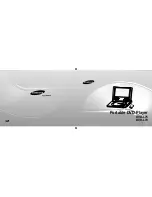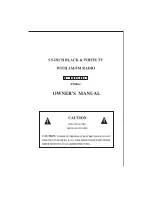
1204-00
8
60706-221
minimizes the drain on the battery and improves the
possibility of starting under such adverse conditions.
Always keep the battery charged, especially during
cold weather operation.
1. Turn on the fuel supply.
2. Move the choke to the full “on” position. A warm
engine will require less choking than a cold engine.
3. Engage the engine start switch briefl y to the
START position. The starter life is improved by
using shorter starting cycles with time to cool off
between cranking cycles. Do not operate the starter
more than 15 seconds during each minute. Repeat
if necessary.
4. When the engine starts, open the choke gradu-
ally.
5. The engine should promptly come up to operating
speed.
CAUTION: EQUIPMENT DAMAGE
Never permit the choke to remain on after the
engine has run for a short time. It is not necessary
to choke the engine when it is warm. Avoid over-
choking.
STARTING HINTS
1.
Cold weather
a. Use the proper oil for the temperature expected.
b. Use fresh winter grade fuel. Winter grade
gasoline is blended to improve starting. Do not
use summer gasoline.
c. A slightly richer fuel mixture will usually improve
cold starting.
2.
Hot weather
a. Use the proper oil for the temperature expected.
b. Use only summer blended gasoline. Using gaso
line left over from winter may cause the unit to
vapor lock.
STOPPING AND STORAGE
1. Move the on/off switch to the “OFF” position.
2. Before extended storage (over 30 days) certain
precautions must be taken care of to ensure the fuel
doesn’t deteriorate and clog the fuel system. Note:
The use of a fuel additive, such as STA-BIL or an
equivalent will minimize the formation of gum depos-
its during storage. Such an additive may be added
to gasoline in the engines fuel tank or to gasoline in
a storage container.
a. Remove the remaining fuel from the fuel tank.
b. Start the engine and allow it to run until all the
fuel in the carburetor and the fuel lines has been
used up and the engine stops.
c. While the engine is warm, drain the oil and refi ll
with fresh oil.
d. Remove the spark plug, pour approximately 1/2
ounce (15 cc) of engine oil into the cylinder and
crank slowly to distribute the oil. Replace the
spark
plug.
e Clean dirt and chaff from cylinder, cylinder head
fi ns, blower housing, screen and muffl er areas.
f. Store in a clean and dry area.
OPERATING SPEED
The engine-generator must be run at the correct
speed in order to produce the proper electrical volt-
age and frequency.
CAUTION: EQUIPMENT DAMAGE
The output voltage should be checked to insure
the generator is working properly prior to connecting
a load to the generator. Failure to do so could result
in damage to equipment plugged into the unit and
possible injury to the individual.
All engines have a tendency to slow down when
a load is applied. When the electrical load is con-
nected to the generator, the engine is more heavily
loaded, and as a result the speed drops slightly.
This slight decrease in speed, together with the
voltage drop within the generator itself, results in a
slightly lower voltage when the generator is loaded
to its full capacity than when running no load. The
slight variation in speed also affects the frequency of
the output current. This frequency variation has no
appreciable effect in the operation of motors, lights
and most appliances. However, electronic equip-
ment and clocks will be affected if correct RPM is not
maintained. See Load vs. Output chart.
Although individual units and models vary slightly,
the normal voltage and frequency of the engine-gen-
erator described in this manual are approximately as
follows, under varying loads:
LOAD VS. OUTPUT
Generator
Load Applied*
Speed
(RPM)
Fre-
quency
(Hz)
Voltage
None
3690
61.5
125V
Half
3600
60.0
120V
Full
3510
58.5
115V
* Portion of plant’s rated output current.






























